
What I should know about carbon monoxide
Where does carbon monoxide come from?
CO can be produced by the combustion that occurs from fossil fuel burning
appliances like a furnace, clothes dryer, range, oven, water heater, or space
heater. When appliances and vents work properly, and there is enough fresh air
in your home to allow complete combustion, the trace amounts of CO produced
are typically not dangerous. And normally, CO is safely vented outside your
home.
Problems may arise when something goes wrong. An appliance can malfunction,
a furnace heat exchanger can crack, vents can clog, or debris may block a
chimney or flue. Fireplaces, wood burning stoves, gas heaters, charcoal grills, or
gas logs can produce unsafe levels of CO if they are unvented or not properly
vented. Exhaust can seep into the home from vehicles left running in an attached
garage. All these things can cause a CO problem in the home.

What is carbon monoxide?
Carbon monoxide (CO) is an invisible, odorless gas. It is a common by-product of
incomplete combustion, produced when fossil fuels (like oil, gas or coal) burn.
Because you can’t see, taste or smell it, carbon monoxide can kill you before you
know it’s there. Exposure to lower levels over time can make you sick.
Why is carbon monoxide so dangerous?
Carbon Monoxide robs you of what you need most: oxygen, which is carried to
your cells and tissue by the hemoglobin in your blood. If you inhale even small
amounts of CO, it quickly bonds with hemoglobin and displaces oxygen. This
produces a toxic compound in your blood called carboxyhemoglobin (COHb).
Carboxyhemoglobin produces flu-like symptoms, for example: headaches,
fatigue, nausea, dizzy spells, confusion, and irritability. Since symptoms are
similar to the flu, carbon monoxide poisoning can be misdiagnosed. As levels of
COHb rise, victims suffer vomiting, loss of consciousness, and eventually brain
damage or death.
Who is at risk from carbon monoxide poisoning?
Everyone is at risk because everyone needs oxygen to survive. Medical experts
believe some people are more vulnerable to CO poisoning: unborn babies,
infants, children, seniors, and people with heart and lung problems.
How can I help protect against carbon monoxide poisoning?
Early warning is important: Install one or more alarms The Consumer Product
Safety Commission (CPSC) recommends that every home have at least one
carbon monoxide alarm with an audible warning signal installed near the sleeping
area. Choose a CO alarm that is Underwriters Laboratories, Inc. (UL) Listed.
Look for the UL logo on the package.
Have your appliances checked regularly. Have a qualified appliance technician
check all fossil fuel burning appliances, venting and chimney systems at least
once a year, or as recommended by the manufacturer.
Where should I look for potential sources of carbon monoxide in the
home?
o A forced air furnace is frequently the source of leaks and should be carefully
inspected by a professional.
o Have a professional measure the concentration of carbon monoxide in the
flue gases.

o Check furnace connections to the flue pipes and venting systems to the
outside of the home for signs of corrosion, rust, gaps or holes.
o Check furnace filters and filtering systems for dirt or blockage.
o Check forced air fans for proper installation and to assure correct air flow of
flue gases. Improper furnace blower installation can result in carbon
monoxide build-up because toxic gas is blown into rather than out of the
house.
o Check the combustion chamber and internal heat exchanger for cracks,
holes, metal fatigue or corrosion – be sure they are clean and free of debris.
o Check burners and ignition system. A flame that is mostly yellow in color in
natural gas fired furnaces is often a sign that the fuel is not burning
completely and higher levels of carbon monoxide are being released. Oil
furnaces can have similar problems. Remember you can’t smell carbon
monoxide.
o Check fireplaces for closed, blocked or bent flues, soot and debris.
o Check all venting systems to the outside of your home. This includes
checking flues and chimneys for cracks, corrosion, holes, debris or
blockage. Animals and birds can build nests in chimneys, preventing gases
from escaping. Vibrations can shake vent pipes loose from gas dryers or
water heaters, preventing CO from being vented properly outside.
o Check all other appliances in the home that use fossil fuels such as natural
gas, oil, propane, wood or kerosene. Appliances include water heaters,
clothes dryers, kitchen ranges, gas heaters, ovens or cooktops, wood-
burning stoves, gas refrigerators or alternative power sources such as
generators.
o Pilot lights can be a source of carbon monoxide, because the by-products of
combustion are released inside the home rather than vented outside.
o Be sure space heaters are vented properly. Unvented space heaters that
use a fossil fuel such as kerosene or propane can release carbon monoxide
into the home.
o Barbecue grills should never be operated indoors under any circumstances.
o Stove tops or ovens that operate on fossil fuels should never be used to
heat a residence.

o Check the clothes dryer vent opening. Lint may block proper venting outside
the house.
What do I do if my carbon monoxide alarm goes off?
Never ignore an alarm! It is very possible that you won’t be experiencing
symptoms of CO poisoning when the alarm sounds. That doesn’t mean there is
no carbon monoxide present. The alarm is designed to go off before you feel
sick, so you have time to react and take action.
Don’t panic. Press the Mute Button to temporarily quiet the alarm, then call 911
or the Fire Department. Immediately move everyone to a source of fresh air.
Moving outside is the safest solution.
Leave the CO alarm where it is (The emergency responders will want to check it
when they arrive). Do not re-enter your home until the emergency responder has
arrived, your home is aired out, and your CO alarm returns to normal operation.
Have the problem corrected as soon as possible. Keep your home well ventilated
until the problem has been fixed.
In some cases, problems can occur even if all appliances are working
properly:
o If appliances, flues and chimneys are confirmed to be in good working
order, the source of carbon monoxide may be from backdrafting. This
condition exists primarily in newer, more energy efficient, “airtight” homes.
Flue gases normally vent to the outside through flues and chimneys. As
temperatures drop at night, air pressure inside an airtight home may
become lower than outside, causing flue gases that normally exit the house
to turn around and flow back down the pipes.
o Inadequate air supply in a room where two or more combustion-driven
appliances share the same air source, such as a water heater and furnace
in a utility closet, can create a more complicated form of backdrafting called
reverse stacking. This occurs when one appliance turns on, such as the
furnace, and is unable to get adequate fresh air. When the furnace
operates, it draws contaminated air from the water heater exhaust, and
spreads polluted air throughout the house.
o A broken thermostat can keep the furnace running continuously, depleting
the oxygen supply inside the house. This may lead to backdrafting.
o In multiple family dwellings like apartments or townhouses, where living
spaces share walls and pipes, carbon monoxide from one unit may go into a
neighboring space through floorboards, cracks, or underneath doors.

How does a carbon monoxide alarm work?
It’s not like a smoke alarm. While a smoke alarm triggers an alarm when it
detects particles of smoke, a carbon monoxide alarm triggers an alarm based on
exposure to CO over time. It is designed to sound an alarm before an average,
healthy adult would experience symptoms.
Remember, with carbon monoxide, it is the concentration of CO over time that
poses a threat. Since carbon monoxide displaces oxygen in your blood, it can
harm you if you are exposed to either high levels of CO in a short period of time,
or to lower levels of CO over a longer period of time. Current UL limits for CO
exposure are:
o 30ppm for 30 days
o 150ppm for 10-50 minutes
o 70ppm for 60-240 minutes
o 400ppm for 4-15 minutes
If initial testing does not confirm the presence of carbon monoxide, there
may be other reasons for an alarm:
o Professional equipment used to measure the presence of carbon monoxide
in the air must be calibrated to sense low levels of gas concentration. Some
detection devices only measure concentrations of 1,000 parts per million
and higher, significantly above safe levels.
o If initial readings don’t reveal sufficient concentrations of carbon monoxide
to set off the alarm, testing equipment which registers levels over a 24-hour
period should be used to help identify the source.
o If doors or windows are left open or appliances turned off, and outside air
enters the home, carbon monoxide can dissipate. This can create a lower
reading than the original level that triggered the alarm.
o To help assure proper measurement, after evacuating the home, carbon
monoxide readings should be conducted by professionals as quickly as
possible after the alarm has sounded. To ensure the most accurate testing
by professionals, leave doors and windows shut after evacuating.
CAUTION: Do not reenter the premises until the emergency services responder
has arrived, the premises have been aired out and the CO alarm remains in its
normal condition.
-
 1
1
-
 2
2
-
 3
3
-
 4
4
-
 5
5
First Alert CO400-3 User manual
- Category
- Carbon monoxide (CO) detectors
- Type
- User manual
Ask a question and I''ll find the answer in the document
Finding information in a document is now easier with AI
Related papers
-
First Alert 1039752-CO710-6 Owner's manual
-
BRK electronic FCD2N User manual
-
First Alert FCD2NP User manual
-
First Alert PRC700 Owner's manual
-
BRK CO600 User manual
-
First Alert PRC710 Owner's manual
-
First Alert PRC700V Owner's manual
-
First Alert FCD2DDNP User manual
-
First Alert CO3000BN User manual
-
BRK electronic First Alert CO400 User manual
Other documents
-
Kidde 21029888 Specification
-
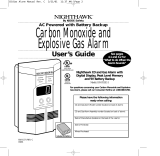 Nighthawk KN-COEG-3 User manual
Nighthawk KN-COEG-3 User manual
-
Kidde KN-COPP-3 User manual
-
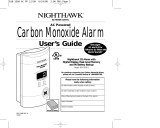 Nighthawk KN-COPP-3 User manual
Nighthawk KN-COPP-3 User manual
-
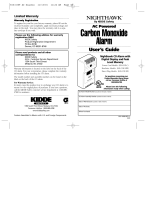 Nighthawk KN-COP-C User manual
Nighthawk KN-COP-C User manual
-
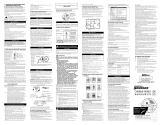 American Sensor Professional COS2010 User manual
American Sensor Professional COS2010 User manual
-
Kidde 900-0107 User manual
-
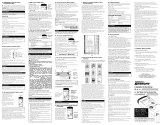 American Sensor CO920 User manual
American Sensor CO920 User manual
-
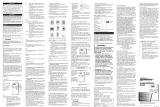 American Sensor CO8B User manual
American Sensor CO8B User manual
-
BRK electronic CO2120PN User manual










